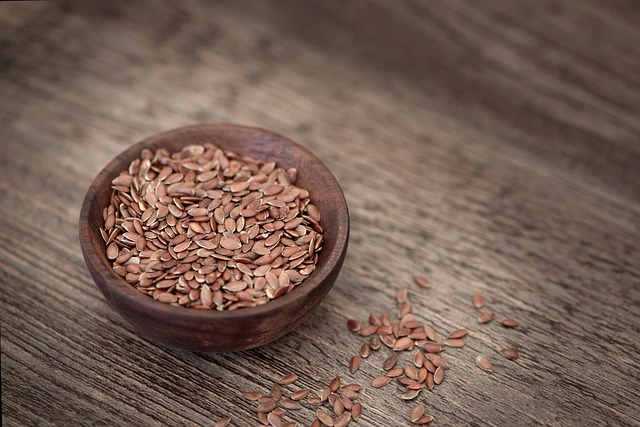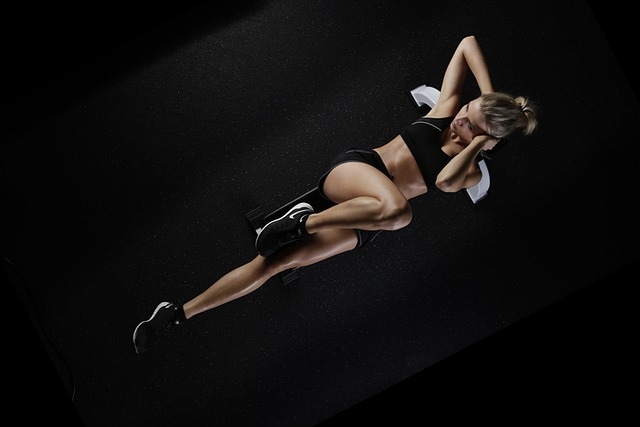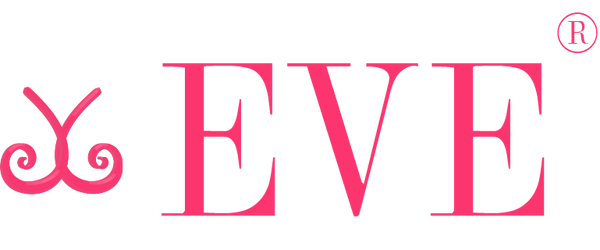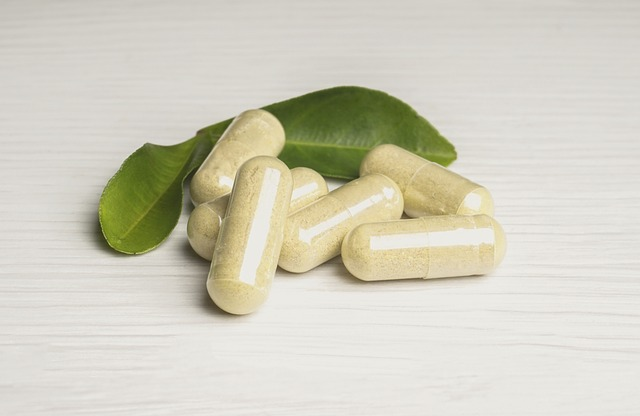Are you intrigued by the prospect of naturally enhancing your breast size, all without the risks and recovery time typically associated with surgery? Look no further. The EVEBRA Breast Enlargement Pump emerges as the scientifically proven solution, validated through extensive clinical trials and as the only breast volume enhancement device reviewed by the FDA.
Table of Contents:
- Introduction
- Understanding The Anatomy of Breasts
- Understanding Breast Development
-
Understanding Breast Augmentation Surgery
- Types of Breast Implants
- Silicone vs. Saline Implants
- The Surgical Procedure
- Risks and Complications
-
Exploring Natural Breast Enlargement Methods
- Do Breast Enhancement Supplements Actually Work?
- Do Breast Massages Help Breasts Grow?
- What Foods Help Breast Enlargement?
- Can Exercise Increase Breast Size Naturally?
- Does Hormonal Imbalance Affect Breast Growth?
- Using Your Own Fat to Enlarge Your Breasts for a Natural Look and Feel
-
How To Get Bigger Breasts Without Surgery
- The Evolution of EVEBRA
- How EVEBRA Breast Enlargement Pump Works
- Conclusion
Understanding The Anatomy of Breasts

Breasts are a fundamental part of both male and female anatomy, with distinct roles and characteristics. In females, breasts serve both functional and sexual purposes, aiding in breastfeeding and providing sexual pleasure. For males, while breasts lack a physiological function, they can still contribute to sexual arousal. Understanding breast anatomy is essential for recognizing potential health issues and maintaining overall well-being.
Female breasts consist of various tissues, including glandular, connective, and fatty tissue. Glandular tissue, also known as lobules, produces milk for lactation, while connective tissue supports the breast structure. Fatty tissue fills the spaces between glandular and connective tissue, determining breast size. The breast anatomy also includes adipose tissue, lobes, milk ducts, nipples, areolae, blood vessels, lymph vessels, lymph nodes, and nerves. Each component of breast tissues plays a vital role in breast development, function, and sensitivity.
During puberty, female hormones such as estrogen, progesterone, and prolactin drive breast development and prepare the breasts for milk production. However, hormonal imbalances or exposure to endocrine-disrupting compounds (EDCs) can adversely make hormonal changes and affect breast health. Conditions such as breast cancer, benign breast disease, cysts, lumps, mastalgia, and mastitis can impact breast anatomy and function.
Maintaining breast health involves regular screenings, such as mammograms, to detect abnormalities early. Breast self-exams are also recommended to monitor changes in breast appearance or texture. Promptly consulting a healthcare provider about any concerning symptoms, such as lumps, nipple discharge, or breast pain, is crucial for timely diagnosis and treatment.
Understanding Breast Development

Breast development is a dynamic process crucial for a woman's reproductive health, occurring in various stages from prenatal to postmenopausal life. It initiates before birth as the mammary ridge thickens, forming rudimentary nipples and milk ducts by birth. Hormones like estrogen, progesterone, and prolactin drive subsequent changes, shaping lobes, glands, and ducts. Puberty marks a significant phase, with full estrogen levels prompting fat accumulation and enlarged breast size, alongside duct system growth. Menstrual cycle fluctuations, fueled by estrogen and progesterone, cause cyclical breast changes like swelling and soreness. Pregnancy brings further development, as hormonal surges prepare breasts for lactation, evidenced by swelling, areola darkening, and increased blood flow. Menopause brings hormonal decline, leading to breast tissue changes and sagging. Implants and Fat Transfer offer alternatives to breast development but have their own risks.
Understanding Breast Augmentation Surgery
Breast augmentation surgery, also referred to as augmentation mammoplasty, is a cosmetic procedure designed to improve the size and shape of the breasts. During this surgical procedure, implants are inserted either under the breast tissue or beneath the chest muscles to achieve the desired aesthetic enhancement.
Types of Breast Implants
During breast augmentation surgery, various factors are taken into account, including the patient's anatomy, desired size, shape, and type of implant. The procedure is typically performed under general anesthesia and may involve incisions made in different locations, such as under the breast, around the areola, or in the armpit.

Silicone vs. Saline Implants
Silicone breast implants and saline implants represent two common choices for breast augmentation surgery. Silicone implants are filled with silicone gel, while saline implants contain sterile saltwater. These options come with their own considerations, which are thoroughly discussed during consultations with a board-certified plastic surgeon. Silicone implants are often chosen for their ability to provide a more natural look and feel, closely resembling the texture of natural breast tissue. They may be preferred in cases where patients desire a softer texture or want to achieve larger augmentation volumes. However, it's essential to note that both saline and silicone breast implants come with potential risks and complications. It's important for patients to carefully consider these factors and discuss their individual circumstances with their surgeon before making a decision.
The Surgical Procedure
The surgical procedure for breast augmentation with implants involves several steps aimed at achieving the desired outcome while minimizing risks. Firstly, the surgeon makes incisions in strategic locations to create pockets for the implants. These incisions can be made in various areas, such as along the inframammary fold (under the breast), around the areola, or in the armpit. The choice of incision location depends on factors like the type and size of the implants, as well as the patient's anatomy and preferences.
Once the incisions are made, the surgeon carefully creates pockets within the breast tissue or beneath the chest muscle to accommodate cup size ofthe implants. Silicone or saline implants are then inserted into these pockets and positioned to achieve the desired shape and projection. The surgeon pays close attention to symmetry and ensures that the implants are centered and proportionate to the patient's body.
After the implants are in place, the incisions are closed using sutures or surgical adhesive, and dressings may be applied to protect the surgical sites. Patients are closely monitored during the immediate postoperative period to manage pain and discomfort and to watch for any signs of complications.
Risks and Complications
While breast augmentation with implants is a common cosmetic procedure, it's crucial to acknowledge the associated risks and considerations. Patients should be aware of potential complications such as capsular contracture, implant rupture, changes in breast sensation, and dissatisfaction with aesthetic outcomes. Moreover, recent developments have highlighted additional concerns surrounding breast implant illness (BII) and the safety of certain implant products. For example, the recent recall of popular breast implants manufactured by Allergan due to concerns about the risk of breast implant-associated anaplastic large cell lymphoma (BIA-ALCL) has raised significant awareness about the potential health risks associated with breast implants. Additionally, implants are not lifetime devices and may necessitate removal or replacement in the future due to various factors, including implant rupture, changes in breast shape or size, or the development of complications. Patients considering breast augmentation using implants should undergo thorough consultation with a qualified plastic surgeon to discuss their expectations, the potential risks involved, and alternative options. This ensures informed decision-making and promotes patient safety and satisfaction.
Exploring Natural Breast Enlargement Methods
Natural breast enhancement methods offer an alternative to surgical procedures for women seeking to enhance their breast size and shape without invasive interventions. These methods focus on utilizing natural techniques, ingredients, and lifestyle changes to stimulate breast tissue growth and achieve desired results. Let's examine the myths and truths surrounding various natural breast size enhancement methods:
Do Breast Enhancement Supplements Actually Work?
According to Dr. Sandhya Pruthi from Mayo Clinic, breast enhancement supplements, which often contain herbs like saw palmetto and wild yam, are unlikely to be effective and may carry potential side effects. While some manufacturers claim that plant-derived substances called phytoestrogens found in these supplements can promote breast size growth, there is insufficient evidence to support this claim.
Moreover, caution should be exercised when taking supplements, as they can interact with other medications, particularly blood-thinning drugs like warfarin (Coumadin, Jantoven). While certain prescription medications, such as hormone therapy and birth control pills, may lead to breast enlargement as a side effect, the components responsible for this effect are not typically found in over-the-counter breast size enhancement supplements.
Do Breast Massages Help Breasts Grow?
Breast massage involves gentle manipulation of breast tissue to enhance blood circulation, lymphatic drainage, and hormone distribution. While it offers benefits for breast health, including potential stimulation of growth, there is no scientific evidence supporting its role in breast size enlargement.

What Foods Help Breast Enlargement?
While incorporating foods rich in essential nutrients like soy products, flaxseeds, and chickpeas into your diet can offer various health benefits, it's important to note that there is limited scientific evidence directly linking these foods to breast enlargement. Despite their nutritional value, there is no conclusive scientific evidence to suggest that consuming these foods will lead to larger breasts. However, maintaining a balanced diet, healthy body weight, and proper hydration are essential for overall breast health and well-being.

Can Exercise Increase Breast Size Naturally?
According to the article "Are There Exercises That Will Naturally Increase Breast Size?" by Gabrielle Kassel, the short answer is that it's highly unlikely to naturally alter the shape and size of your breasts. Factors such as genetics, hormones, body weight, lifestyle, and potential life stage play significant roles in determining the size of your breasts. While certain exercises can impact the strength and appearance of the chest muscles, they are not likely to directly increase breast size. The article suggests that natural remedies and lifestyle changes cannot enhance breast size, but exercises targeting the pectoral muscles can contribute to a change in chest-tissue size, density, strength, and tone.

Does Hormonal Imbalance Affect Breast Growth?
Breast development in women is intricately linked to hormonal balance, with hormones playing a pivotal role in guiding breast tissue growth and functioning. During prenatal development, puberty, and pregnancy, the endocrine system secretes hormones that influence breast development at crucial stages. The breast extends from the collarbone to the lower ribs and consists of milk ducts that travel from bulbs within the fatty tissues to the nipples. Hormones such as estrogen, progesterone, and androgens regulate the growth and division of breast cells during puberty, leading to the development of ducts, lobules, and milk-producing cells. However, exposure to endocrine-disrupting compounds (EDCs) during critical developmental periods can pose risks to breast health. EDCs, such as bisphenol A (BPA), phthalates, pesticides, herbicides, and heavy metals, can mimic, antagonize, or disrupt hormonal pathways responsible for breast development. Research suggests that early exposure to EDCs may increase the risk of breast cancer later in life. Therefore, maintaining hormone balance is essential for healthy breast development and minimizing the impact of EDCs on breast health (Russo et al., 2001; Keeling et al., 2000; Barker, 1994; Vandenberg et al., 2012; Schug et al., 2011).
Using Your Own Fat to Enlarge Your Breasts for a Natural Look and Feel
Fat transfer, also known as fat grafting or autologous fat transfer, is a procedure that utilizes the patient's own fat to enhance volume in targeted areas of the body. Dr. Roger Khouri, board certified plastic surgeon and a pioneer in this technique, employs a meticulous process to achieve natural and lasting results, particularly in breast augmentation. Through liposuction, fat is gently harvested from donor areas like the belly fat, thighs, or waist using a fine needle-like cannula. This harvested fat contains naturally occurring stem cells, which are preserved during the transfer process. Dr. Khouri's innovative approach involves pre-expanding the breast tissue using the external tissue expander, creating an optimal matrix for fat injection. It's important to note that Dr. Khouri's procedure focuses on fat grafting rather than stem cell manipulation. Stem cell therapies lack sufficient clinical evidence for cosmetic applications, as emphasized by a joint position statement from leading plastic surgery organizations, including the American Society for Aesthetic Plastic Surgery (ASAPS) and the American Society of Plastic Surgeons (ASPS). Dr. Khouri is committed to truth in advertising and emphasizes that his technique is a fat grafting procedure, backed by clinical studies demonstrating its efficacy and safety. His dedication to excellence has earned him recognition globally, with accolades such as the European Award for Best Reconstruction Procedure. Through seminars, conferences, and personalized training, Dr. Khouri shares his expertise, transforming the lives of women with his revolutionary fat grafting technique. For more information on this procedure, visit: www.miamibreastcenter.com.
How To Get Bigger Breasts Without Surgery
In the quest for non-surgical breast enhancement, the innovative EVEBRA emerges as a revolutionary solution, building upon the foundation laid by its predecessor, BRAVA external tissue expansion system. Originating from years of scientific research and technological advancements, Dr. Roger Khouri pioneered the concept of external tissue expansion through sustained vacuum pressure, stimulating breast tissue growth and promoting natural augmentation. Through gentle suction and micro-vibrations, BRAVA meticulously stretched the breast tissue, fostering increased blood flow and cell proliferation in the mammary glands. This groundbreaking approach garnered attention for its efficacy and safety, offering individuals a non-invasive alternative to traditional breast augmentation surgery.

Building upon the success and principles of BRAVA, EVEBRA represents the next evolution in non-surgical breast enhancement. Harnessing cutting-edge technology and refined design, EVEBRA introduces a new era of breast enhancement devices, tailored to meet the needs and preferences of modern users. With its comfortable design, EVEBRA seamlessly integrates into daily routines, allowing individuals to enhance their breast appearance from the comfort of their home. By combining gentle suction with advanced micro-vibrations, EVEBRA maximizes tissue stimulation and blood circulation, facilitating natural breast growth and firmness over time.
As a new product in the realm of non-surgical breast enhancement, EVEBRA represents the culmination of years of research, innovation, and scientific understanding. With its proven efficacy and commitment to safety, EVEBRA empowers individuals to achieve their desired chest size and aesthetic goals without the need for invasive surgical procedures. Through its innovative technology and transformative potential, EVEBRA heralds a new era of confidence and self-assurance for those seeking natural and non-invasive breast enhancement solutions.

How Does EVEBRA Breast Enlargement Pump Work?

In simple terms, EVEBRA works by applying a gentle but consistent pull on the breast tissue, which stimulates growth and fills the breast with new tissue. This growth is especially targeted towards the upper part of the breast. If worn continuously for at least 50% of the day, EVEBRA can lead to gradual breast enlargement over time.
The process involves two main phases: temporary swelling and true tissue growth. Initially, when you start using EVEBRA, you may experience temporary swelling, giving the appearance of larger breasts and breast lift. However, this swelling is not permanent. True tissue growth occurs gradually over months of consistent use.
Research has shown that chronic swelling encourages the body to replace the fluid in the swollen tissue with natural fat, resulting in real breast enlargement. It's important to wear EVEBRA consistently for optimal results.
The amount of time you wear EVEBRA each day affects the rate of increase breast size. Wearing it for less than 50% of the time may not lead to significant progress, while wearing it for more than 50% of the time can accelerate growth.
Missing a day of EVEBRA wear can lead to a loss of swelling, requiring a few days of increased wear to compensate and maintain progress

Conclusion
In conclusion, while surgical augmentation offers immediate results, it comes with risks. For those seeking non-surgical alternatives, devices like EVEBRA provide promising avenues for natural breast enhancement. Building upon Dr. Roger Khouri's pioneering work with BRAVA, EVEBRA offers a safe and effective solution. By understanding options and consulting with professionals, individuals can achieve their aesthetic goals confidently.





